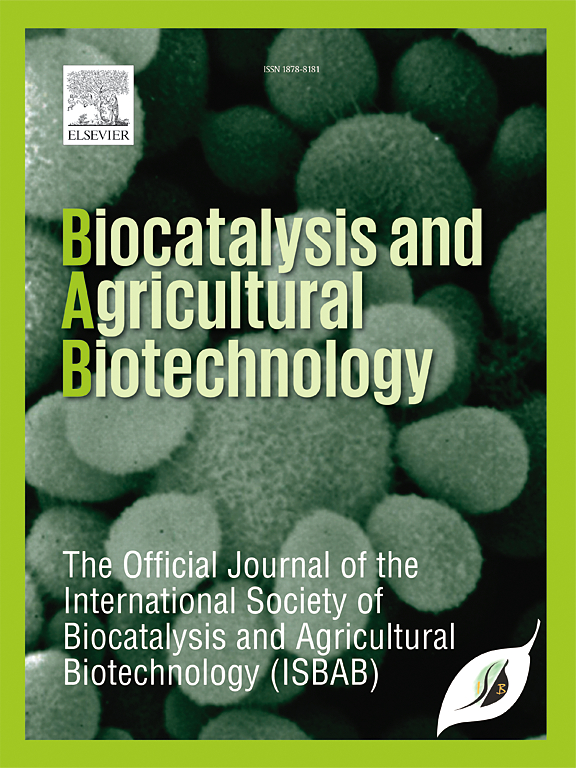Heterologous laccase from the marine environment: Purification, characterization, and degradation of synthetic dyes
IF 3.4
Q2 BIOTECHNOLOGY & APPLIED MICROBIOLOGY
引用次数: 0
Abstract
The marine-derived fungus Peniophora sp. CBMAI 1063 is a hyper-producer of laccase. Laccases are multicopper oxidases able to oxidize different aromatic compounds while reducing molecular oxygen to water. Several laccases from terrestrial environments have been purified and characterized. However, little is known about marine-derived laccases. In this study, Pnh_Lac1 (Lac1) from the fungus Peniophora sp. CBMAI 1063 was heterologously expressed in Pichia pastoris, purified, characterized, and used for the degradation/detoxification of synthetic dyes. Lac1 (∼72 kDa) exhibited optimal activity at 60 °C and pH 3, with good thermostability (T501h = 56 °C) and high tolerance to metal ions and organic solvents. Lac 1 decolorized/degraded different classes of dyes, under low enzyme concentrations (0.2–0.02 U mL-1), with an excellent performance regarding the decolorization of Indigo Carmine (93% after 2 h) in the presence of syringaldehyde. Additionally, 65% of the azo dye Reactive Black 5 was degraded by the Lac1-mediator system into lower molecular weight metabolites, with a significant reduction in phytotoxicity. These results demonstrate that the marine-derived Lac1 is a fungal laccase highly active under low concentration, with the potential to mitigate environmental pollutants on biodegradation strategies based on biocatalysis.
求助全文
约1分钟内获得全文
求助全文
来源期刊

Biocatalysis and agricultural biotechnology
Agricultural and Biological Sciences-Agronomy and Crop Science
CiteScore
7.70
自引率
2.50%
发文量
308
审稿时长
48 days
期刊介绍:
Biocatalysis and Agricultural Biotechnology is the official journal of the International Society of Biocatalysis and Agricultural Biotechnology (ISBAB). The journal publishes high quality articles especially in the science and technology of biocatalysis, bioprocesses, agricultural biotechnology, biomedical biotechnology, and, if appropriate, from other related areas of biotechnology. The journal will publish peer-reviewed basic and applied research papers, authoritative reviews, and feature articles. The scope of the journal encompasses the research, industrial, and commercial aspects of biotechnology, including the areas of: biocatalysis; bioprocesses; food and agriculture; genetic engineering; molecular biology; healthcare and pharmaceuticals; biofuels; genomics; nanotechnology; environment and biodiversity; and bioremediation.
 求助内容:
求助内容: 应助结果提醒方式:
应助结果提醒方式:


